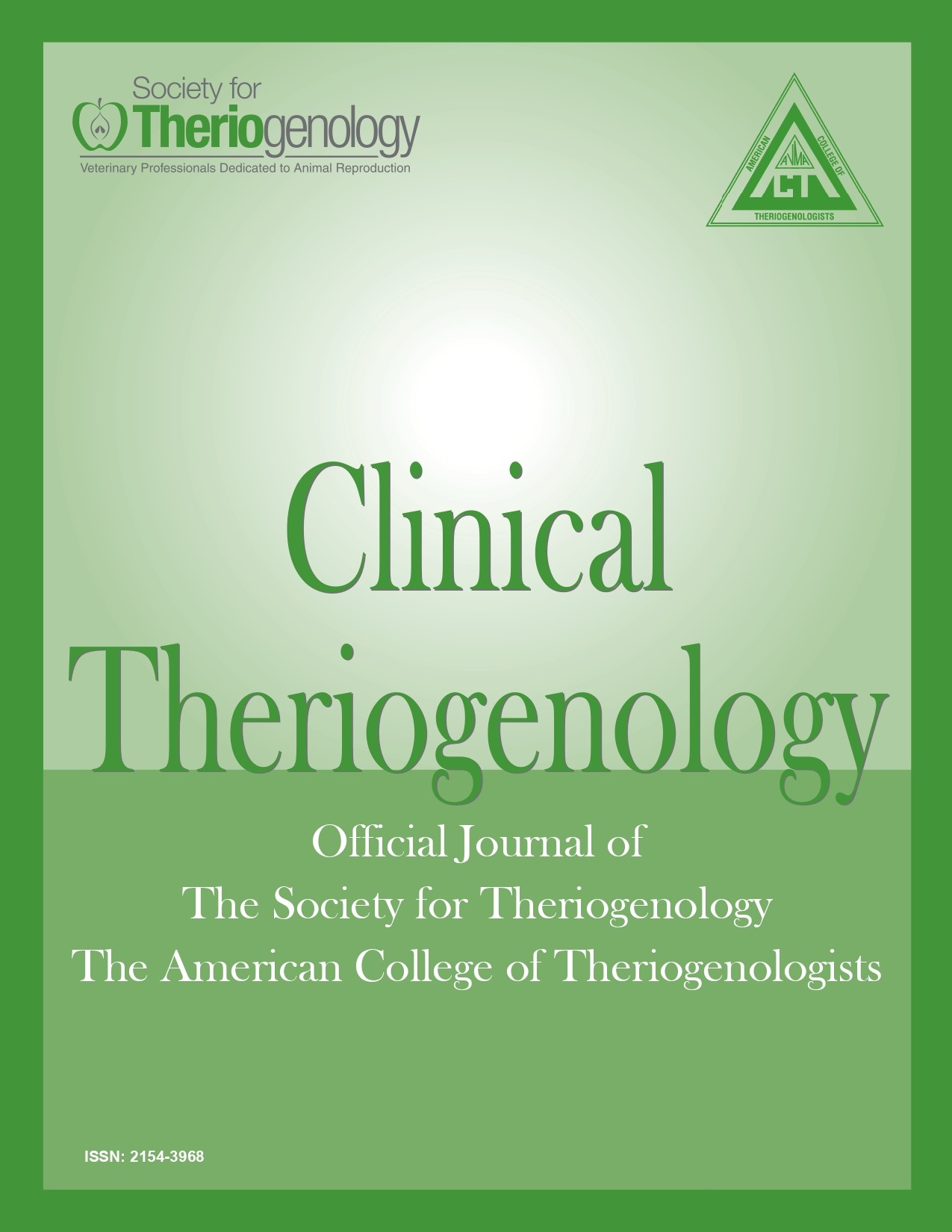Ovarian remnant syndrome in small animals: case series
Abstract
Our objective was to report the utility of various diagnostic tests in identifying ovarian remnant syndrome (ORS) in dogs and cats. Medical records from 2 referral teaching hospitals (Health Sciences Centre at the Ontario Veterinary College and Cornell University Hospital for Animals) were examined and 48 animals (31 dogs and 17 cats) were chosen. Data included were based on sufficient clinical or diagnostic evidence of ORS. Histopathology was used as the confirmatory test for ORS. There was no difference between the proportions of dogs versus cats diagnosed with ORS. Similarly, there was no difference in the proportions of ovarian remnants (OR) between large, medium, or small dogs, or the side (right, left, or bilateral) in which OR was diagnosed. Vaginal cytology and transabdominal ultrasonography findings, and serum progesterone concentrations had the highest chance of correctly identifying an OR prior to exploratory surgery. Transabdominal ultrasonography had strong agreement with OR location identified at surgery. Presumptive intraoperative diagnosis of OR was possible in 39/41 cases (95.1%). Auxiliary diagnostic testing should be recommended to confirm functional ovarian tissue before surgery to reduce unnecessary surgery. Additionally, transabdominal ultrasonography examination may reduce surgical time since ovarian remnant location has strong agreement with surgical findings.
Downloads

This work is licensed under a Creative Commons Attribution-NonCommercial 4.0 International License.
Authors retain copyright of their work, with first publication rights granted to Clinical Theriogenology. Read more about copyright and licensing here.





